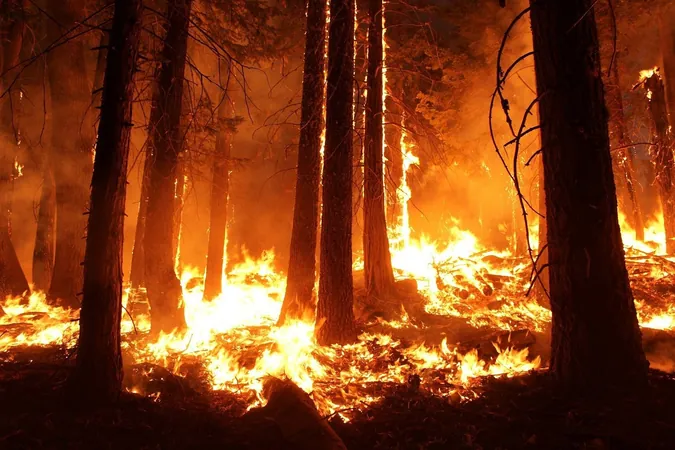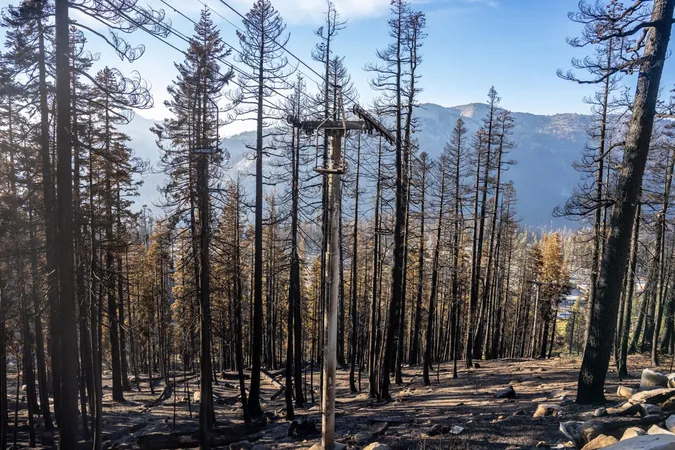
Wildfires: The Unseen Culprit Behind Global Warming’s Acceleration!
2024-09-25
Author: Emma
Introduction
As our planet heats up, an alarming pattern emerges—more frequent and larger forest fires could be fueling the very conditions that continue to elevate global temperatures. A groundbreaking study that reviewed satellite data spanning over a decade has uncovered this unexpected connection, highlighting a crucial factor in understanding climate change dynamics.
Increasing Wildfire Severity
Recent years have witnessed a disturbing increase in the scale and severity of wildfires, especially in regions like the western United States and eastern Spain. In fact, the size of fire events in these areas has doubled or even tripled compared to past decades. While everyone knows that such devastating fires lead to significant vegetation loss, the broader implications for our climate have remained largely unexamined—until now.
Research Findings
The research, led by Chao Yue and colleagues, analyzed satellite images documenting wildfire occurrences from 2003 to 2016 in the northern temperate and boreal forests. The findings were shocking: one year following fire events, these areas experienced a notable warming effect. This observation aligns with previous studies; however, using advanced mathematical modeling, the researchers discovered something even more alarming: larger fires dramatically intensified surface warming effects in North America and eastern boreal Asia.
Evapotranspiration and Surface Reflectivity
One of the critical revelations from this study was the decrease in evapotranspiration and surface reflectivity one year after forest fires—higher still for larger fire events. Essentially, following a wildfire, the land releases less moisture and absorbs more solar radiation, leading to an increase in surface temperatures. Strikingly, this amplified warming was not observed in regions such as western, central, and southeastern Siberia and eastern Europe, where mixed and primarily deciduous broadleaf forests prevail.
The Role of Forest Composition
Experts suggest that the composition of these forests plays a protective role against fire vulnerability. This raises an intriguing possibility: could future fire management strategies involve nurturing or increasing the number of broadleaf trees in vulnerable forests to mitigate the effects of post-fire surface warming? While this concept is promising, researchers stress that more studies are essential to fully grasp how broadleaf trees might help in regulating surface temperatures in diverse ecosystems across Eurasia.
Conclusion
As the planet grapples with the urgent challenges of climate change, the relationship between wildfires and global warming becomes a critical focal point for researchers and policymakers alike. The question looms: how do we confront this escalating cycle of destruction and warming? Could the answer be hidden in the types of trees that populate our forests? Only time and further research will tell. Stay tuned as we uncover the ongoing battle against climate change and its many, complex players!









 Brasil (PT)
Brasil (PT)
 Canada (EN)
Canada (EN)
 Chile (ES)
Chile (ES)
 España (ES)
España (ES)
 France (FR)
France (FR)
 Hong Kong (EN)
Hong Kong (EN)
 Italia (IT)
Italia (IT)
 日本 (JA)
日本 (JA)
 Magyarország (HU)
Magyarország (HU)
 Norge (NO)
Norge (NO)
 Polska (PL)
Polska (PL)
 Schweiz (DE)
Schweiz (DE)
 Singapore (EN)
Singapore (EN)
 Sverige (SV)
Sverige (SV)
 Suomi (FI)
Suomi (FI)
 Türkiye (TR)
Türkiye (TR)